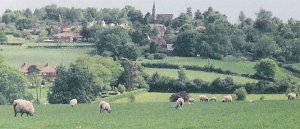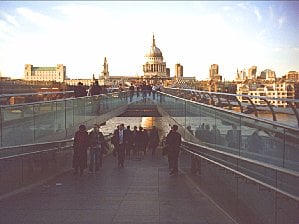

The adminstrative regions of London, South East England and parts of the East of England are interlinked and interdependent in many ways. Because of high degrees of interdependence it is arguable that neither London nor its neighbouring regions can approach sustainability in isolation.
Open spaces[edit | edit source]
- London Green Belt Council, protecting London's Green Belt, added 12:01, 5 November 2021 (UTC)
- About London's Green Belt includes "Benefits of the Green Belt", which include "Eco-system benefits: Different types of open land provide multiple eco-system benefits which include urban cooling, improved air quality, flood protection and carbon absorption (especially woodland areas), as well as local food production." as well as Recreation, sport, health, Future proofing, and multiple economic benefits.
- Our Message includes "Government must now:"
Commuting and migration[edit | edit source]
Commuting has major impacts on the character of each administrative region. This has implications for communicating Sustainability. Messages that are primarily about where people live may be less effective when directed at people working in different areas, and vice versa. It is easier for people to divorce the consequences of their actions when they are physically disconnected from where those consequences will occur.
Migration and commuting between administrative regions, for example retirement migration, contributes to the character of local economies. Whilst some areas may be economically more dynamic and resilient, others, for example coastal communities can, in effect pay the costs.
The carbon footprint of commuting patterns rarely seem to be highlighted. When the administration of the whole region is split it is easier for this to seem to be someone else's problem.
Planning and transport - a democratic deficit?[edit | edit source]
Expansion of Heathrow is just one of the most obvious examples of an issue which affects all parts of the South East.
Although there may be some administrative arrangements there is arguably a democratic deficit, especially in relation to planning issues affecting the whole of the South East.
Firstly very few people (ordinary citizens and communities) may be aware of any administrative arrangements or bodies which tackle such issues, and even fewer may feel included or represented by any such arrangements.
As with the issue of carbon footprints, split administrative arrangements provide scope for buck passing.
It is also easier for administrations to 'divide and rule' any opposition to their plans. For example on issues such as housebuilding or major transport infrastructure projects people advocating more sustainable solutions whether for the city or the countryside are easily portrayed as NIMBYS and the enemies of each other (especially if sustainability groups from different administrative regions don't talk to each other enough).
Other aspects of interdependence[edit | edit source]
Wanted sections: Water; Food; Environment quality - pollution, air quality, etc.
Partnerships[edit | edit source]
The Downlands Countryside Management Project established in 1988 is a partnership between six London and Surrey local authorities set up to manage an area of countryside of 130 km² across the south of Outer London.
The main aims are the management of the rare chalk downland within the area; the development of an extensive network of trails (including the London Loop); and the improvements to signposting; rights of way; woodland and pond management.
The Project is supported by the boroughs of Sutton and Croydon; and by Surrey County Council; the City of London Corporation; the Surrey districts of Reigate and Banstead and Tandridge; and the Countryside Agency. An additional partner is Natural Britain.
Resources[edit | edit source]
Research[edit | edit source]
- Bioregioning: Pathways to Urban-Rural Reconnection, There is a metabolic rift running through our economy and culture, and it is distracting our attention from care for the biosphere. To heal this rift,… John Thackara sciencedirect.com
News and comment[edit | edit source]
2019
The Guardian view on London and England: a deep divide.[1] May 6
2017

Kent targeted to take huge housing hit, Sep 27[2]
2015
From fringe to fork – food and the Green Belt, Sep 29...[3]Rural sustainability UK
2014
London and southeast England most at risk of rising deaths due to climate change, March 23[4]
2013
The Great Divide – building bridges between cities and their rural hinterlands,[5] March 1
2007
"The TCPA believes that to achieve sustainable development there needs to be greater cross boundary co-operation between outer London boroughs and adjoining regions and strongly supports a clear and robust framework for climate change and sustainable energy."[6]June 19
See also[edit | edit source]
- London community action
- South East England community action
- Towards a more democratic and climate friendly way of meeting housing need across England
- Saving water in South East England
local information can be found, or shared, via our many UK location pages
External links
Wikipedia: City region, London commuter belt
- HACAN Clearskies, representing residents under the Heathrow flight path
References
